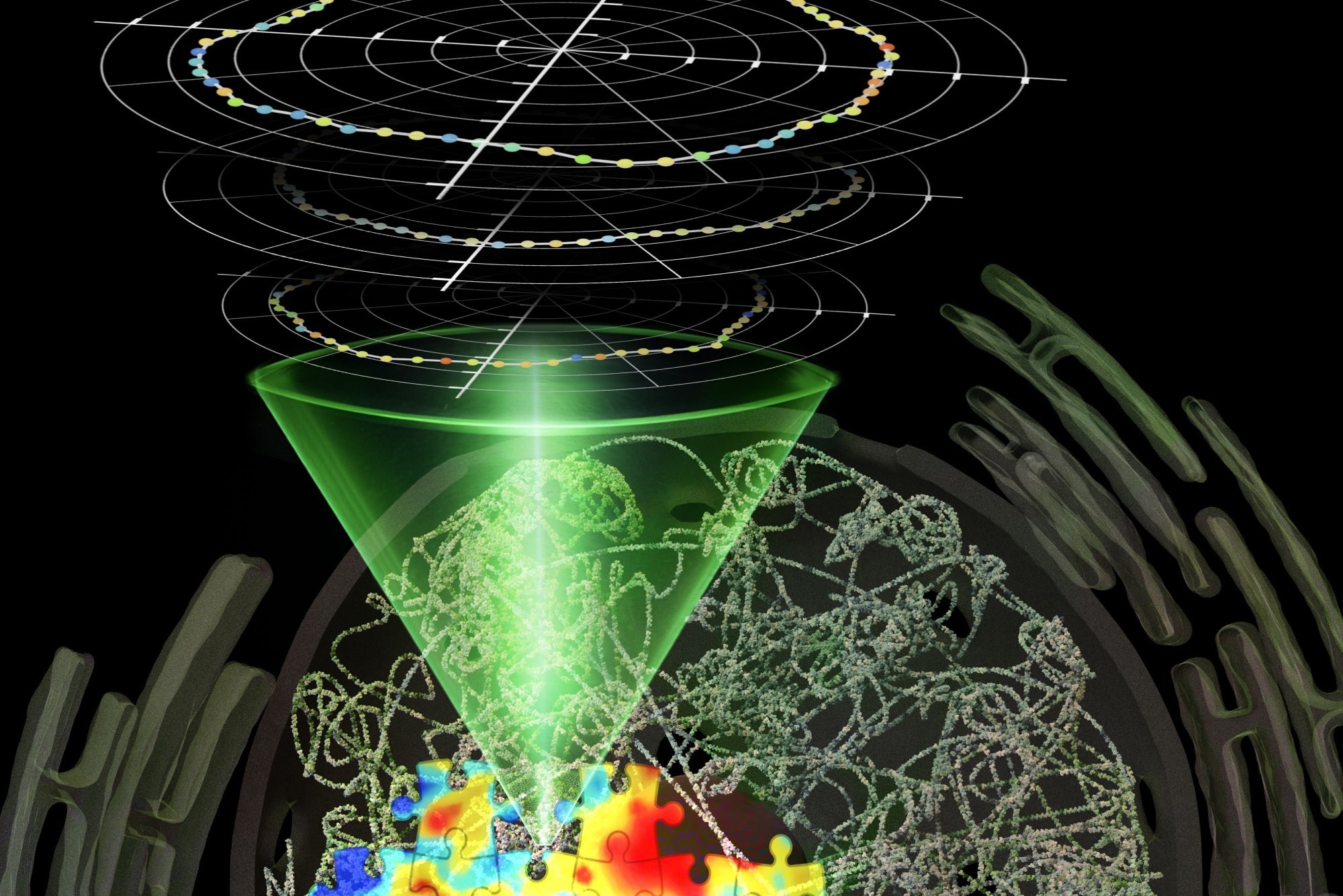Though its material characteristics still baffle scientists, the cell nucleus is thought to be the center of control for essential cellular functions.

Image Credit: Medical University of Vienna
Now, a new method led by MedUni Vienna and involving international researchers offers a view of the mechanical properties inside this control center that was not possible before. Its unique dynamic structural features in living cells have been seen for the first time, and they seem to be essential for cell function. The study’s findings, which were published in Nature Photonics, may help comprehend life’s basic functions better.
The mechanical characteristics of the cell nucleus have long piqued the curiosity of researchers. It is established that these can alter during the course of different diseases and that they need to be properly regulated for the cell to function.
The cell nucleus is also known to exhibit both liquid and solid behavior; however, it is not evident how these characteristics can contribute to essential processes like the reorganization of the nucleus during cell division or the quick and efficient synchronization of processes in various regions of the nucleus.
Highly Dynamic Structure Visualized
These questions are now more closely addressed by the research group headed by Kareem Elsayad at the Center for Anatomy and Cell Biology at MedUni Vienna, which is a part of the Medical Imaging Cluster at MedUni Vienna.
Researchers have created a method that allows for the long-term imaging of intricate mechanical characteristics in living cells’ nuclei. Based on a technique known as “Brillouin Light Scattering,” the method calculates how much light is scattered by thermal vibrations in a sample that is continuously present. Calculating a sample’s elasticity and viscosity in the direction that the light is scattered can be done using the scattered light spectrum.
The scientists were able to produce spatial maps of the cell nucleus that show how its mechanical structure varies over time by simultaneously measuring this from all angles. In addition to being extremely dynamic, the scientists discovered that it has an odd long-range order that might be in charge of synchronizing processes within the nucleus.
Understanding the Development of Diseases
What we can visualize with our technology is fascinating and in a way groundbreaking. The unusual properties we observe give us some insight into how the cell nucleus is able to synchronize vital processes so quickly and efficiently, and in such a directed way, despite usually looking like just a messy warm soup.”
Kareem Elsayad, Study Leader, Division of Anatomy, Center for Anatomy & Cell Biology, Medical University of Vienna
The results could also contribute to a better physical understanding of pathological anomalies that are associated with changes in nuclear processes. Future studies using the new technology are expected to build on these findings, for example, to clarify the key molecular players and environmental factors that underlie the curious mechanical and structural properties of cell nuclei.
Source:
Journal reference:
Keshmiri, H., et al. (2024) Brillouin light scattering anisotropy microscopy for imaging the viscoelastic anisotropy in living cells. Nature Photonics. doi.org/10.1038/s41566-023-01368-w